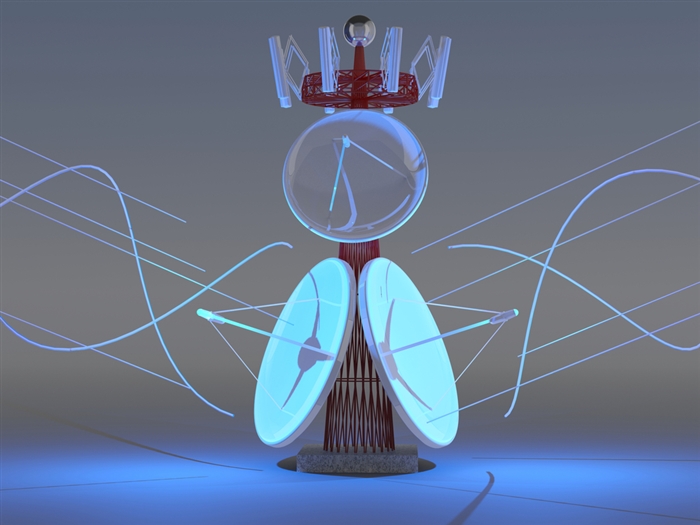-
Accelerating the Fast Fourier Transform (FFT/iFFT) by 10x and More
Accelerating the Fast Fourier Transform (FFT/iFFT) by 10x and More
Snehaprabha Narnakaje
Arnon Friedmann
Fast Fourier transforms (FFTs) are a critical operation used in a wide range of complex systems today such as radar, communications, economics, video, music and more. Achieving acceleration for FFTs is about trading off the dynamic performance for the speed of processing. The dynamic range is a function of the precision of the calculation as well as the size of the FFT being performed. The table below shows the speed improvements of our FFT coprocessor (FFTC) that we have integrated onto a number of our processors. On the low-end of precision, it is common to see 16bit fixed point implementations (for smaller FFT lengths) and on the higher-end of precision we see double precision floating point implementations for FFT lengths as long as a billion points.
| Performance metric | Processing core | FFT size | |||
|---|---|---|---|---|---|
| 1024 | 2048 | 4096 | 8192 | ||
| FFTs per second | FFT coprocessor | 705,000 | 303,000 | 154,000 | 66,000 |
| C66x DSP core | 74,000 | 35,000 | 9,000 | 4,000 | |
| SNR (dB) | FFT coprocessor | 85.2 | 84.8 | 84.1 | 83.8 |
| C66x DSP core | ~300 | ~300 | ~300 | ~300 | |
| Equivalent GFlops | FFT coprocessor | 36.1 | 34.1 | 37.8 | 35.4 |
| C66x DSP core | 4.5 | 4.2 | 4.5 | 2.5 | |

As shown in the preceding table, the speedup is quite dramatic, with the FFTC providing 10x-15x improvements over the DSP cores. Also shown in the table, the SNR for the FFTC is ~85dB vs. the ~300dB of precision for the digital signal processor (DSP). On the DSP, we have a single precision floating point implementation. On the other hand, the FFTC uses a block floating point algorithm that gives about 20dB better performance than a fixed point implementation and are sufficient for many applications, such as radar.
We studied the impact of the precision on synthetic aperture radar (SAR) and compared results using the FFTC to results using the DSP cores. The comparison shows that the FFTC performs as well as the DSP cores using full precision for the SAR application. Details of the study can be found in the white paper: Optimizing Modern Radar Systems using Low-Latency, High-Performance FFT Coprocessors.
Here we see one example of how an FFT coprocessor can be used in place of programmable cores (such as ARM® or DSPs) to accelerate the overall system. Leveraging the FFTC engine(s) can provide meaningful system performance lift in systems where the SNR performance of the FFTC engine meets the application requirements. To learn more:
Devices with FFTC:
IMPORTANT NOTICE AND DISCLAIMER
TI PROVIDES TECHNICAL AND RELIABILITY DATA (INCLUDING DATASHEETS), DESIGN RESOURCES (INCLUDING REFERENCE DESIGNS), APPLICATION OR OTHER DESIGN ADVICE, WEB TOOLS, SAFETY INFORMATION, AND OTHER RESOURCES “AS IS” AND WITH ALL FAULTS, AND DISCLAIMS ALL WARRANTIES, EXPRESS AND IMPLIED, INCLUDING WITHOUT LIMITATION ANY IMPLIED WARRANTIES OF MERCHANTABILITY, FITNESS FOR A PARTICULAR PURPOSE OR NON-INFRINGEMENT OF THIRD PARTY INTELLECTUAL PROPERTY RIGHTS.
These resources are intended for skilled developers designing with TI products. You are solely responsible for (1) selecting the appropriate TI products for your application, (2) designing, validating and testing your application, and (3) ensuring your application meets applicable standards, and any other safety, security, or other requirements. These resources are subject to change without notice. TI grants you permission to use these resources only for development of an application that uses the TI products described in the resource. Other reproduction and display of these resources is prohibited. No license is granted to any other TI intellectual property right or to any third party intellectual property right. TI disclaims responsibility for, and you will fully indemnify TI and its representatives against, any claims, damages, costs, losses, and liabilities arising out of your use of these resources.
TI’s products are provided subject to TI’s Terms of Sale (www.ti.com/legal/termsofsale.html) or other applicable terms available either on ti.com or provided in conjunction with such TI products. TI’s provision of these resources does not expand or otherwise alter TI’s applicable warranties or warranty disclaimers for TI products.
Mailing Address: Texas Instruments, Post Office Box 655303, Dallas, Texas 75265
Copyright © 2023, Texas Instruments Incorporated